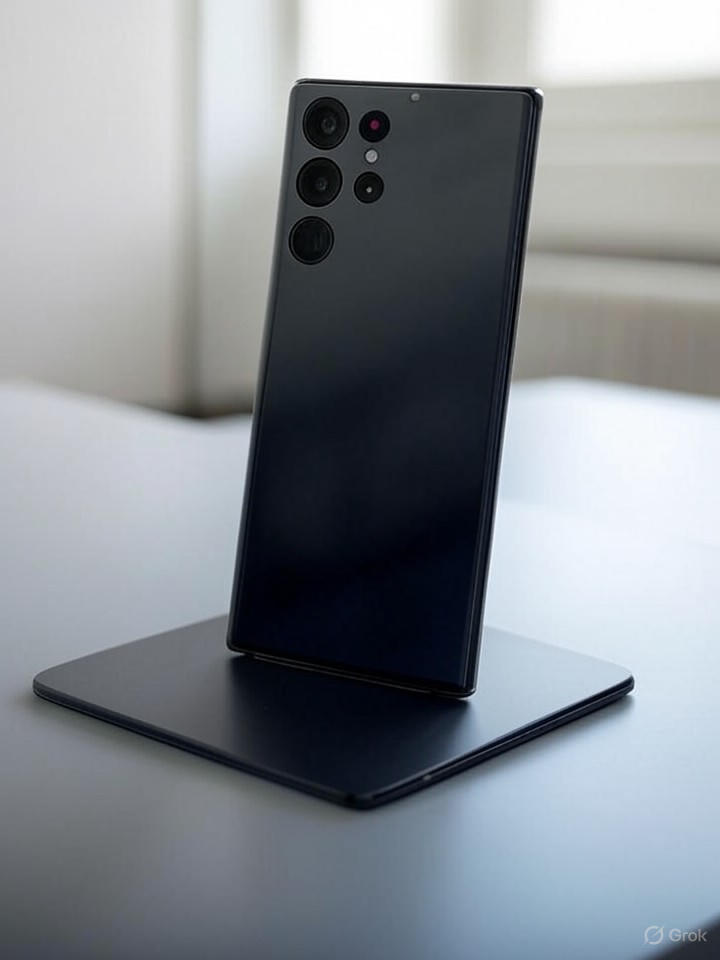Samsung Electronics Co. is preparing to introduce a significant enhancement in biometric security with its upcoming Galaxy S27 series, particularly the Ultra model. Early reports indicate that the device may feature an advanced facial recognition system known as Polar ID. This innovation could signal a shift away from Samsung’s traditional reliance on 2D scanning methods, positioning the company to take on Apple Inc. and its industry-leading Face ID technology.
The Polar ID system, as suggested by industry insiders, utilizes polarized light technology to improve security. This method promises greater resistance to spoofing attempts and enhanced functionality across various lighting conditions. If successful, this development could redefine user expectations for biometric security on Android devices, marking a substantial leap forward for Samsung.
Current Limitations and the Need for Improvement
Samsung’s existing facial recognition, used in devices like the Galaxy S24, employs basic 2D imaging, which is vulnerable to being fooled by photographs or masks. This approach has drawn criticism for not meeting modern security standards, especially when compared to Apple’s Face ID, which uses 3D depth-sensing technology for robust authentication. Industry analysts have urged Samsung to prioritize advanced biometric solutions in response to increasing consumer demand for secure yet convenient authentication methods.
Hints of Samsung’s plans emerged on X (formerly Twitter) from leaker @UniverseIce. These indicate a potential shift towards under-display camera technology and improved sensors, setting the stage for enhancements anticipated in the S27 series. This evolution aligns with a broader trend in the tech industry, where biometric systems are adapting to counter growing cyber threats.
Understanding Polar ID Technology
At the core of the rumors surrounding the Galaxy S27 is the Polar ID technology, developed in collaboration with Metalenz Inc. and Qualcomm Inc.. According to an article from Android Police, early firmware tests for the Galaxy S27 Ultra reference “Polar ID v1.0.” This system, which boasts a latency of just 180 milliseconds, distinguishes itself from traditional infrared-based methods by using metasurface lenses to analyze light polarization.
Metalenz asserts that this advanced approach can effectively differentiate genuine skin from fake replicas in all lighting conditions, potentially eliminating the need for dedicated infrared sensors and paving the way for a notch-free display. A report from NotebookCheck.net suggests that Polar ID could exceed Face ID in both security and versatility, with insiders claiming it is “more secure and works in all kinds of lighting conditions.”
Samsung’s partnerships with Metalenz and Qualcomm are not new. Their collaboration was highlighted at CES 2024, focusing on next-generation imaging technologies. As reported by SamMobile, the goal is to integrate Polar ID into Snapdragon-powered devices, with the Galaxy S27 Ultra positioned as a frontrunner. The Snapdragon 8 Gen series chips are anticipated to enhance AI-driven processing, facilitating quicker recognition, which could help Samsung distinguish its products in a crowded market.
Challenges and Market Implications
Despite the excitement surrounding Polar ID, challenges remain. The integration of this technology requires precise calibration to minimize false positives, and reports from Gagadget indicate that it is still undergoing testing. Cost considerations could lead to a higher price point for the S27 Ultra compared to its predecessors. Additionally, regulatory scrutiny concerning biometric data privacy, particularly in regions like the European Union, may pose obstacles to widespread adoption.
Comparisons to Apple’s Face ID reveal potential pitfalls. While Polar ID aims to eliminate the infrared cutout, ensuring reliability in low-light environments has yet to be proven. PhoneArena notes that while early rumors suggest enhancements for Samsung’s 2027 flagship, these claims remain speculative. Samsung faces the challenge of balancing innovation with user trust to avoid backlash stemming from past biometric failures.
If Polar ID is successfully launched, it could create ripple effects throughout the Android ecosystem, compelling competitors such as Google and OnePlus to upgrade their facial recognition technologies. As highlighted by Sammy Fans, a transition from 2D to more sophisticated 3D-like scanning would elevate industry standards and could integrate seamlessly with Samsung’s Galaxy AI for features like adaptive authentication.
Consumer sentiment on X appears optimistic, with users expressing eagerness for “a major facial recognition upgrade better than Face ID.” This potential advancement could enhance Samsung’s market share in high-end segments, where security features significantly influence purchasing decisions. Analysts predict that by 2027, biometric capabilities will become crucial differentiators in the smartphone landscape, positioning Samsung to lead if Polar ID lives up to its promises.
Future Prospects in Biometric Technology
The anticipated upgrade of the Galaxy S27 reflects a broader narrative surrounding the evolution of biometric technology. While companies like Huawei and Xiaomi have experimented with 3D facial recognition, none have matched Apple’s scale. Recent discussions on X from users like @SuperSaf commend Samsung for its advancements in AI, particularly in areas related to portrait mode depth mapping, which could enhance Polar ID’s functionality.
Looking ahead, the integration of Polar ID with augmented reality and Internet of Things (IoT) devices could broaden its applicability. Reports from SammyGuru suggest that Samsung is planning a significant overhaul of its facial recognition system for the Galaxy S27 Ultra, which could position the company at the forefront of a biometric race that could redefine smartphone security for years to come.
As Samsung continues to iterate on its technology, the S27 may also incorporate features like a 200MP camera sensor, as hinted at by posts from users such as @TechHome100. While the launch of the S27 is still some time away, these early insights into Samsung’s innovation pipeline hint at a competitive future for the smartphone market, one where advanced security features could play a pivotal role in shaping consumer choices.







